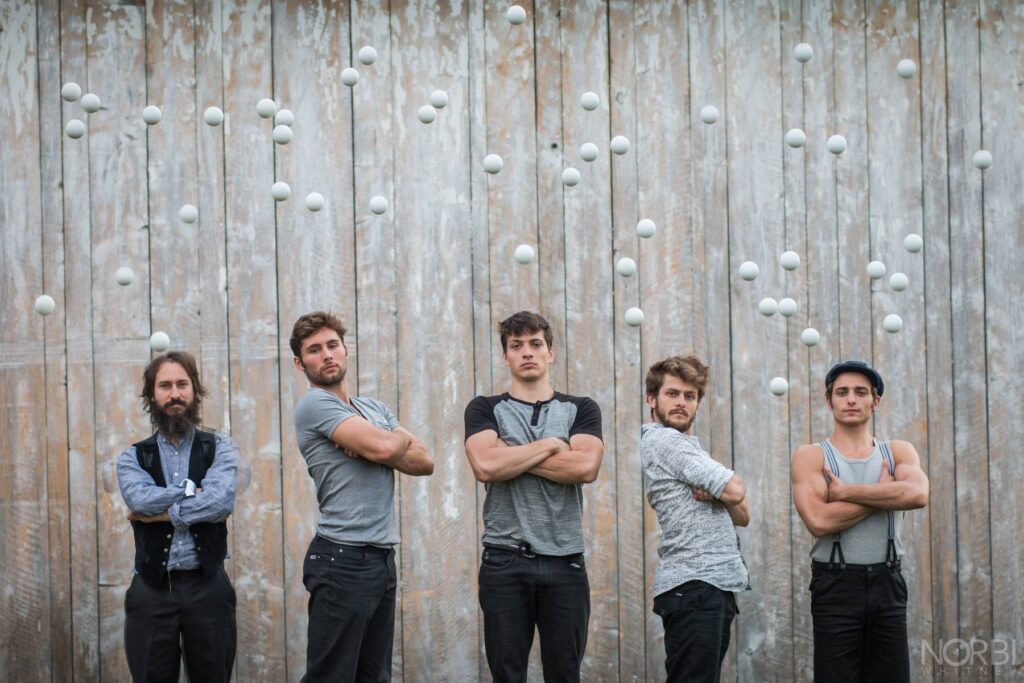Share This:
September 25, 2016 | Theatre,
Circus in Real Life
For P. Carl’s Creative Producing class we had the opportunity to sit and talk with some of Machine de Cirque’s amazing ensemble. We spoke to Johan (whose specialty in the show is the bicycle tricks), Fred (the musician), and Hugo (who had the hilarious audience participation act, aka ‘the date’). They talked about how they came to be circus artists, how they collaborate, and how they create shows. From their conversation what struck me was how circus is more universal than I initially thought, and the concepts can be used outside of performance.
When asked about creating this specific show Hugo said that they “improved together in collaboration”. It began with the director, Vincent Dubé, having a main concept of combing circus, props, and machinery into a cohesive circus act and then improving with the performers. They then discussed what worked in the improv and what didn’t, and formed a show from there. There are many ways we non-circus artists can take improvisation and use it in our everyday lives. Firstly there is the concept of ‘yes, and…” where no ideas are wrong and you cannot say no to anything outright. At work or at school you may come across ideas or concepts you don’t initially like or agree with, and your first reaction may be to say no. But in the spirit of improvisation, instead of saying ‘no’ say ‘yes but’ or ‘yes and’. Secondly something I admire greatly about circus performers is their ability to improv when something goes wrong in the show. For instance a performer could tumble too far and almost fall off the stage! Instead of crying or bemoaning that the show is ruined, they get back up and do the tumble again. This is a great life lesson, instead of letting mistakes or misjudgments get you down get back up and try again.

Another huge topic that came up in our discussion is communication. While there was a director in the room, every performer and musicians felt as though they could comment about the show as a whole and other acts they were not directly involved in. Fred said of the process, “you have to know why you’re doing something” which is something so true as a theatre artist and just as a person living your life. In order to be the most passionate about a project you can possibly be you have to understand it’s importance, it’s impact, and why you are doing it in this exact moment. Hugo also interjected in this moment and said, “we are [also] lucky to take our skills and communicate something to the audience…our art is energy and the communication of that”. As a theatre practitioner communication is key not only with your fellow performers and practitioners but with the audience. Although a movement or an intention might seem clear to you, if it does not translate to your audience then you have not done your job to the best of your abilities.
The last piece of circus that we can bring into our own lives is the art of collaboration. Johan said about how they collaborate, “we are all strong individually, but we have to listen and try everything”. There is no better way to phrase collaboration, a willingness to listen and to try. The ability to play with ideas and structure is not only important in circus to create the best show possible but can help us at our jobs, doing school projects, and even having political discussions.
So although circus seems so far away and unattainable, we can always bring little pieces of circus into our everyday lives.




Leave a Reply